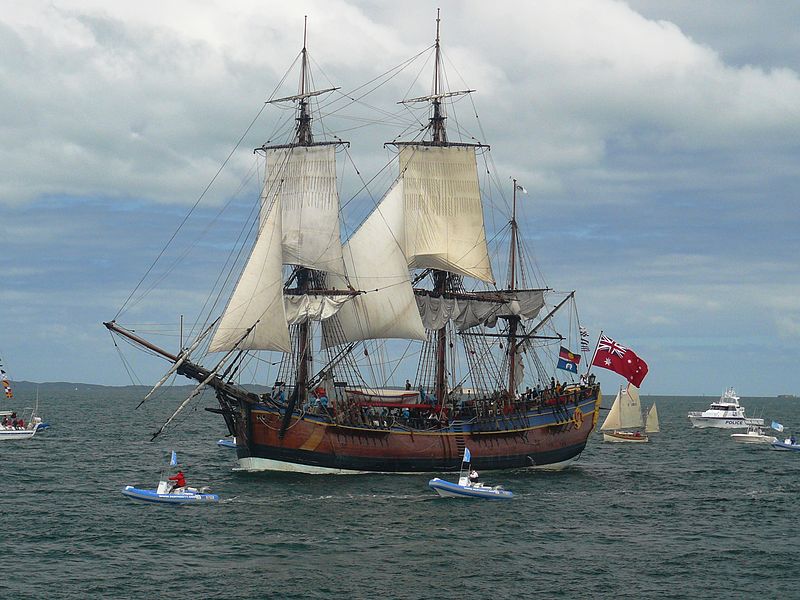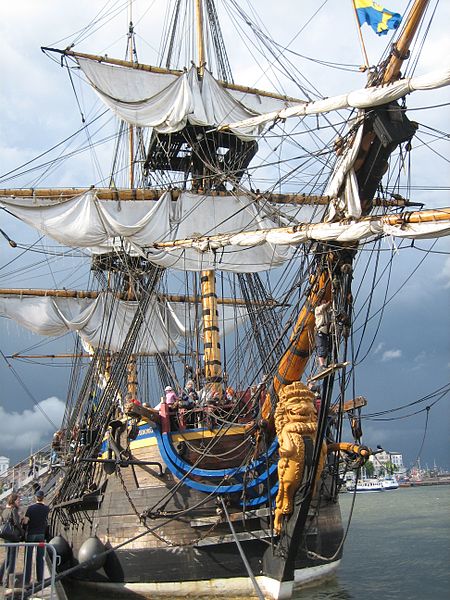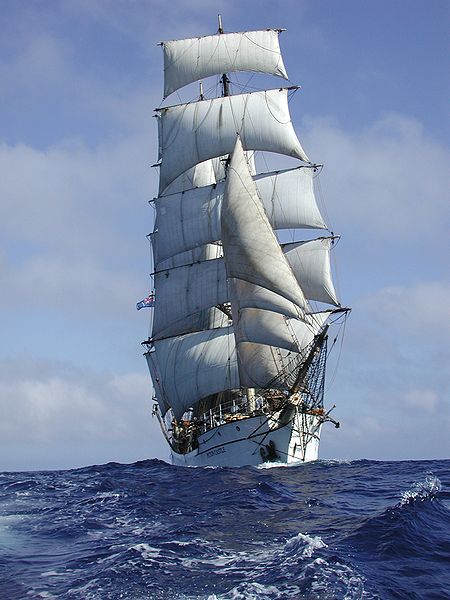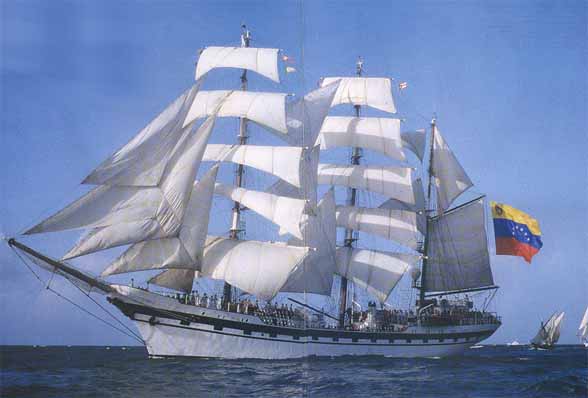
HM Bark Endeavour, Entering the Port of Fremantle, 12-10-2011. Photo by John M Wheatley via Wikimedia Commons.
Nothing evokes ideas of romance and adventure like tall ships. Movies often reinforce this. Released in 1985, The Goonies has been seen and can be quoted by people of all ages, many of whom weren’t even born when the movie was released.
One thing you get from repeated viewings (because you can’t watch just once) is the visceral positive reaction to tall ships. Tall ships are a reminder of centuries of history. They remind us of exploration on the high seas, encountering new lands and new peoples, and the spirit of adventure.

The Swedish East Indiaman Götheborg in front of Helsinki, Finland. Photo by Pöllö via Wikimedia Commons.
Despite the beauty and grace of these ships, they eventually became victims of technology and the pursuit of profit. Boats powered by steam rather than unpredictable winds became the next big thing. Transporting people and goods was more reliable and economical when you didn’t have to rely on prevailing winds and the overhead costs of large crews.
But sometimes we hang on to the old. People began for look for new ways to use these ships without losing all the profit. One solution is to train people in the arts and skills involved in sailing.
Sail Training International is one of the organizations that has re-purposed tall ships. According to their website, they are “the world’s leading provider of races & events, conferences & seminars, publications, research and other services for the international sail training community.” They conduct sail training for youths, which not only teaches the technical aspects of sailing, but also teaches them about themselves and how to work as a team.
Tall ships are also used militarily. Many countries around the world use tall ships to train their naval officers. There is value in knowing how to sail the old way, learning about winds and seas. As with the youth who attend sail training, there is also value in learning about themselves and others, as well as how to work as a team. They also participate in tall ship races and festivals.
I learned about the military training aspect in 1981 when I lived in Portsmouth, New Hampshire and the training ship of the Venezuelan Navy, the Simon Bolivar, visited. Countries not only use tall ships for training in sailing, but also to allow the students, naval officers, to act as good will ambassadors. While the ship was in port, the public was allowed to tour the ship and speak with the students. The students participated in events with the locals. Along with my friends and family, I spent time with some of these officers. We had the opportunity to learn about their culture as they learned about ours.
Besides the Simon Bolivar, I’ve been lucky enough to tour several historic ships in England and here in San Diego. For me, the allure of the history they represent never fades.


